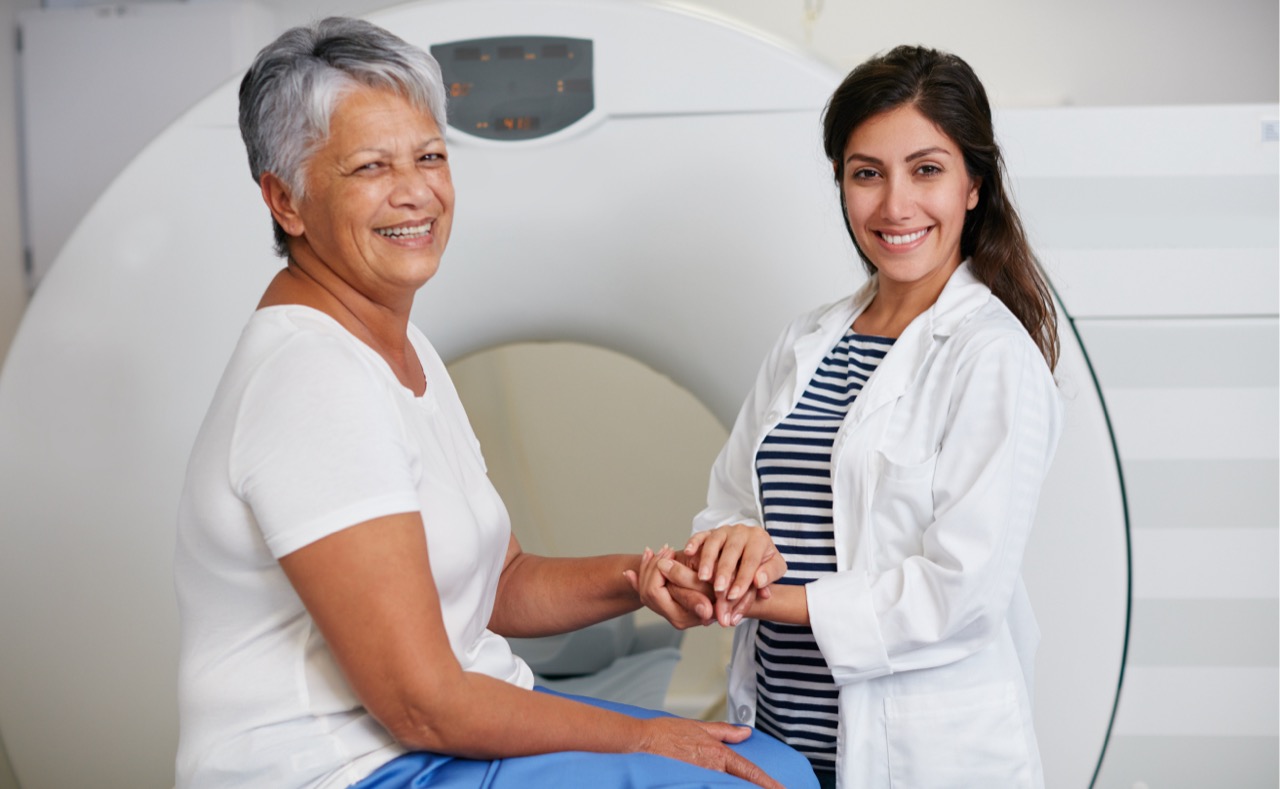A mammogram is a type of X-ray scan that is used to screen the breast tissue for any anomalies that could be, or lead to, breast cancer. Detecting breast cancer early is important, as it can lead to better treatment outcomes and improved prognosis. Plus, it's beneficial to put your mind at ease when it comes to your breast health by having these important screening scans regularly.
Normally, women over the age of 50 are invited to a screening mammogram every three years via the NHS. However, you could be offered a diagnostic mammogram if you have visited your GP with any symptoms of breast cancer, or before the age of 50 if you have a family history of breast cancer.
At Scan.com, we offer screening mammogram appointments starting from age 40, and more regularly than the usual 3-year NHS interval. With us, you can have a mammogram every year.
If you're preparing for your first mammogram appointment, or it has been a while since you last had one, here is our guide to what to wear, how to prepare, and what to expect on the day of your mammogram.
What to wear to a mammogram appointment
We recommend wearing loose, comfortable clothing for your mammogram, as you will be asked to undress from the waist up.
We also suggest wearing a two-piece outfit with separate top and bottoms, rather than a one-piece outfit like a dress, jumpsuit, or playsuit. This is so that you'll be more comfortable in your own clothes from the waist down, and can just remove your top.
On the day of your mammogram, it is recommended that you don't wear deodorant, lotions or creams in your breast and armpit area. It's also worth making sure you've washed off any of these products from the day before, though you may be provided with wet wipes at the mammogram facility so that you can clean the area before your scan. This is because:
-
Some of these products contain metallic substances, such as aluminium in deodorant, that can show up as white spots on your mammogram images and may look similar to calcifications when a radiologist is assessing the images. While calcifications are not always something to worry about, they could be an early sign of breast cancer and may need additional testing and imaging. If it is simply an effect of wearing deodorant during your appointment, this can be unnerving and is avoidable.
-
The breast tissue needs to be gently compressed between two plates, and if you have used a moisturising cream in the breast area, it may cause blurring if the breast skin is slippery and moves while on the plate.
You're welcome to bring your lotions and apply deodorant when you get changed after your mammogram appointment, but it's best not to wear them for your scan. The same goes for makeup - it's fine to wear makeup on your face for your appointment, but bronzers and contours should not be applied to the neck or chest before a mammogram in case they affect the images.
What happens during a mammogram appointment?
When you book a mammogram screening with Scan.com, you'll be asked about your medical history, whether you've had any prior mammograms, and if you have any noticeable breast problems, breast changes, breast pain, or potential symptoms of breast cancer. If you have symptoms of breast cancer, you will need to arrange a diagnostic mammogram through your GP to access the correct care pathways, rather than booking a screening mammogram.
On the day of your mammogram, you'll visit the certified mammogram facility that you chose when you booked, and wait in the waiting room. The mammogram technologist, usually called a mammographer, will invite you into the scanning room, and explain the process.
They will ask you to undress from the waist up, including removing your bra, and in some cases, any jewellery that might obstruct the chest area.
The mammogram technician will then gently place your breasts one at a time on the mammogram machine. They will compress the breast tissue with a clear plate.
This may cause some discomfort, but it should not be painful and should only last for a short time. Many women say it is not as uncomfortable as they were expecting it to be, but depending on your breast size and menstrual cycle, it can cause discomfort which can be managed with over-the-counter pain relief. If you are experiencing pain, let your mammogram technologist know.
You can read more about whether mammograms are painful in our separate blog.
Multiple images will be taken of your breasts, both from side to side and top to bottom, including surrounding tissue from areas of your armpit. You'll need to stay still while this is happening, but each image only takes a few seconds to complete. They will then move on to the other breast.
How does a mammogram work?
Mammograms use X-rays to create images of your breasts from different directions. They can be used to spot warning signs of breast cancer early - this is beneficial because early detection of breast cancer can positively affect the treatment pathways available and overall outcomes.
A special type of x-ray machine is fitted with breast plates, which are used to compress your breast tissue and hold it in place for the short duration of the scan. The X-ray is then emitted through your breast tissue in small bursts, and is detected on the opposite side of the machine. The amount of radiation that passes through the breast tissue is used to generate images. This gives you a clearer picture of your breast health and can spot signs of developing breast cancer at regular intervals.
Most women don't find this painful, but, if you have experienced pain at a mammogram before, you should not avoid scheduling this important screening. Your mammogram technologist will be there to support you. You can also take mild pain medication, such as over-the-counter medications like paracetamol or ibuprofen, to reduce breast tenderness during and after the scan.
The risks of using X-rays for mammogram screening are low, but you should let your mammographer know if you are pregnant, or think you might be. This is because the risks are greater for an unborn baby.
How will I receive my results after my mammogram?
We work with a range of suppliers to provide nationwide mammograms. It is worth asking them on the day of your appointment how you will receive your results, and when to expect them.
Typically, results reports will be sent either by email or post in the days following your scan.
If any anomalies or significant findings are discovered, the scanning centre's breast specialists, either a duty doctor or Clinical Nurse Specialist (CNS), will call you to discuss the outcome of your scan and what next steps you should take. You can either continue with private care via the healthcare provider that did your scan, or you can return to your NHS GP or usual primary healthcare provider.
Your mammogram results can be shared with your GP easily, to ensure you receive the correct onward care quickly and efficiently.
If your test results come back as normal, they will have been verified by two independent radiologists. You can rebook another breast screening mammogram in twelve months' time. You can also keep these previous mammogram images and reports for comparison when you rebook.
https://www.breastcancer.org/screening-testing/mammograms/why-cant-i-wear-deodorant






